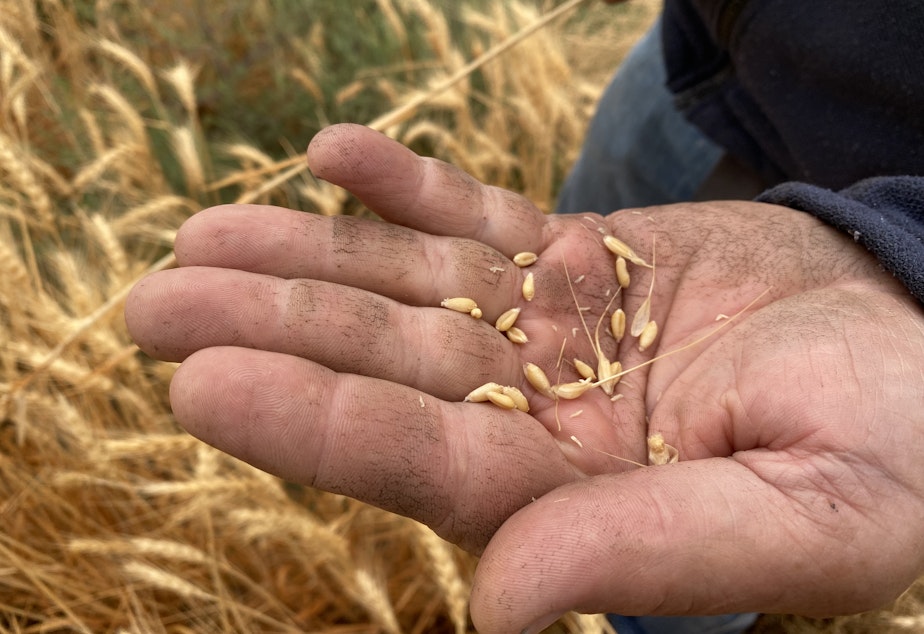
Brian Cochrane stands in a field of his soft white wheat. The golden slopes roll from where he stands and then dive into the snakey, Snake River – just out of Windust, Washington.
Cochrane rolls a head of his wheat between dirt-stained palms counting the grains.
“One, two, three, four…” he mumbles, "ten, eleven, twelve, thirteen, fourteen,” weazened kernels. There should be around three times that many in this head of wheat.
Cochrane sniffs a bit and emotion rattles his voice.
“I feel like I’m letting my parents and my grandparents down, you know” he said. “I’m doing the best I can.”
Cochrane isn’t alone with his disappointing winter wheat crop in the Northwest.
Farmers across much of central and eastern Northwest have been seeing oceans of dryland wheat that should be curled now, heavy with grain – instead standing straight up, too light. The wheat has been stressed from searing spring temperatures and too-little rain.
Crop report
The U.S. Department of Agriculture said in a report this week Washington and Oregon’s winter wheat crops are expected to be light. Washington is down 11 bushels per acre from last year. Eleven bushels looks like about two, 55-gallon drums full.
Oregon is down 12 bushels per acre. However, across the nation, the overall wheat crop is up 9 percent from last year.
“Winter wheat yields across the region are down from the previous year and the five and ten year averages, which is not surprising, given the crop conditions that have been observed throughout the growing season,” said Dennis Koong, regional director of the USDA’s National Agricultural Statistics Service Northwest Regional Field Office.
The wheat heads are few, as well. In Washington, the USDA reports there are just 31.7 heads per square foot, the five year average is 37.9 and the 10 year average is 36.3.
There aren’t similar numbers for Oregon as the USDA only collects field measurements from the top 10 wheat-producing states.
“Certainly the dry conditions don’t give a whole lot of optimism when you come into this point of the year,” said Amanda Hoey, the CEO of Oregon Wheat Commission based in Portland. “We celebrate the good years and it’s a challenging one when we don’t have the same outcome. The dry conditions, there will be producers that are significantly down from their averages – and that will be tough to see.”
The report shows that early July conditions this year were 51 percent “good to excellent” in Washington compared to 70 percent at this time last year. Conditions were considered good to excellent in just 21 percent of the crop in Oregon while last year it was near 80 percent.
Click here to see more...